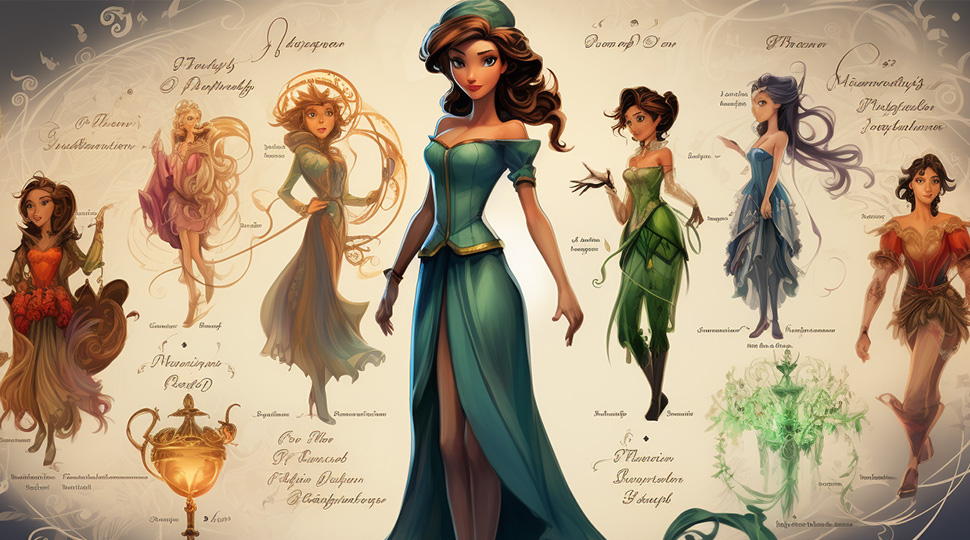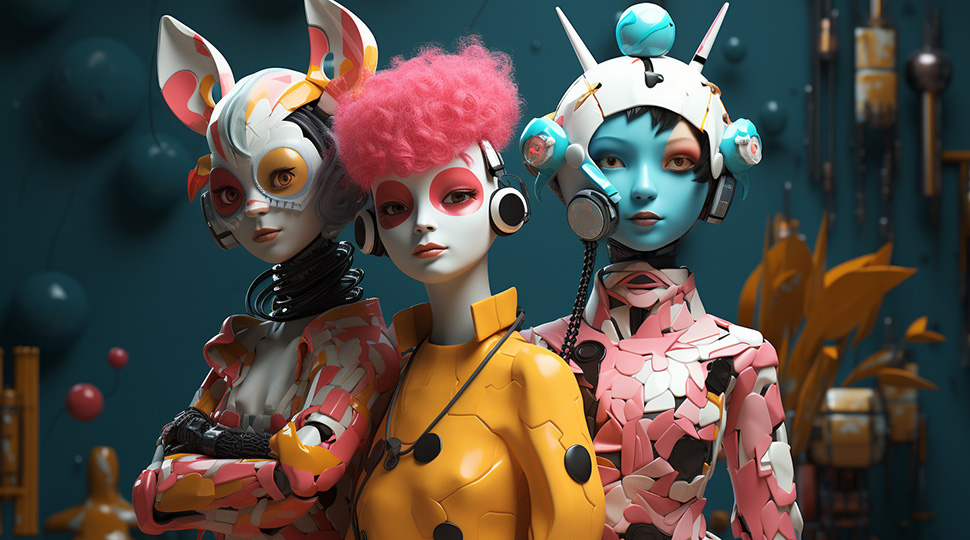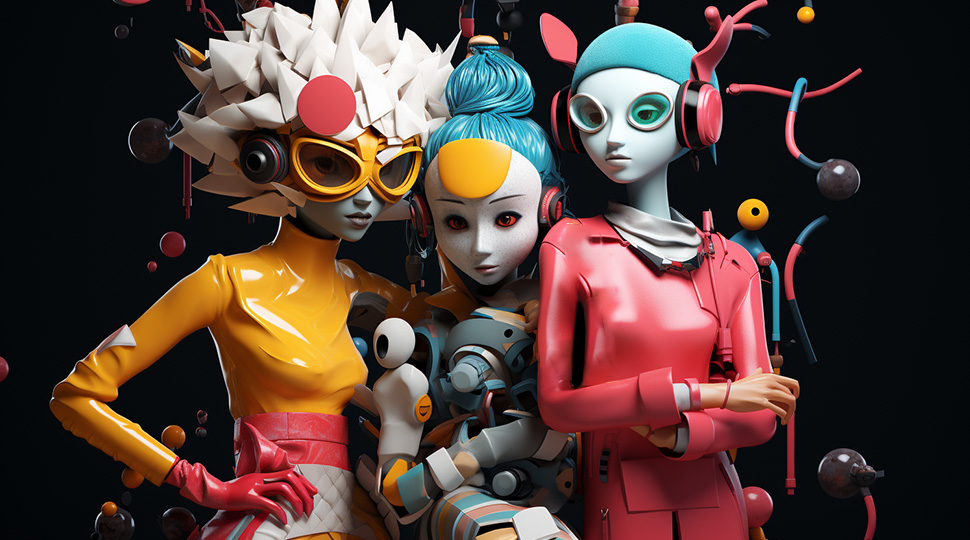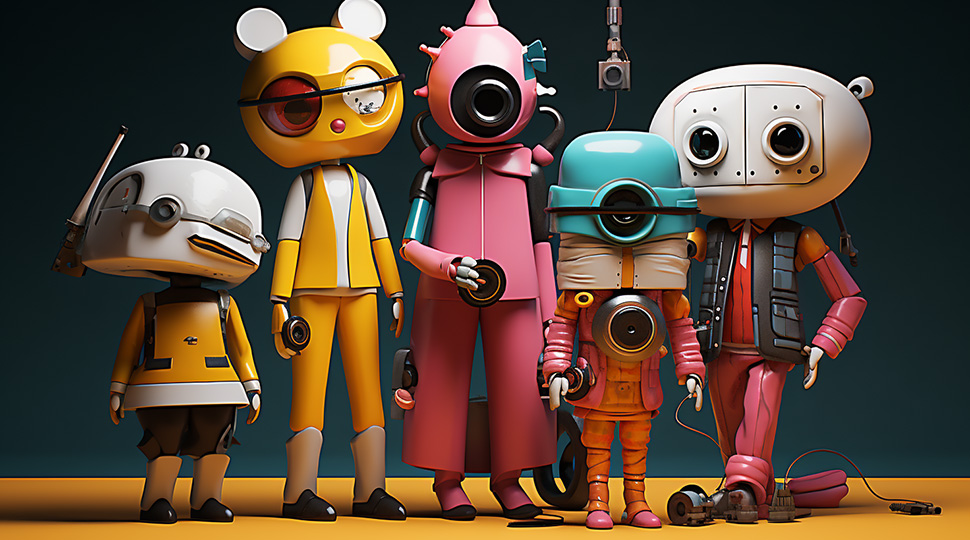At the heart of every good story is a compelling character that invites the audience to relate to them and get invested in their journey. And a key part of creating that strong appeal is in their look. This goes further than just a fancy outfit — every seemingly small detail of how a character looks can switch up everything about their vibe. Whether it’s the crisp uniform of a soldier or the untied laces of a tardy kindergartener, all these elements come together in the important process of character design.
What Exactly Is Character Design?
Well, simply put, it’s the process of creating a unique character for storytelling or other similar purposes. Making an animated tale with just stick figures might make for a cheaper animated video, but it won’t make for a good one. Here, you’ll be crafting a character’s appearance, clothing, and overall vibe to make them more impactful and memorable. This is also how you communicate who a character is at a glance.

It doesn’t matter if you are doing a 2D or 3D character animation, everything start with a concept that is typically developed in 2D. To start, designer usually use Adobe Photoshop, Adobe Illustrator or physical paper.
Why Does This Matter?
Think of character design as the soul of storytelling. Each design pieces the character’s backstory, personality, and emotion, and having all these unique characters in one place is what makes a scene captivating. They pull us into their world, making us care about their stories and adventures.
How Do You Do Character Design?
Like building a house, good character design needs a solid foundation. You need to know the list of ingredients needed for killer character design, and we’re here to tell you all the steps to get it.
Conceptualise Your Character
Before delving into the elements of character design, you need to think about what kind of character you’re designing.
Think about your character’s history. Where did they grow up? A bustling city or a secluded forest? Did they have a challenging childhood or were they the town’s golden child? What do they do, and how does that affect how they navigate the world? Their environment, past experiences, and even their job play a massive role in shaping who they are.
Next up is their personality. Characters are like us; they have feelings, dreams, and quirks. Maybe your character is fiery and impulsive, always jumping into danger. Or perhaps they’re introspective and always lost in thought. Every wrinkle, tattoo, or fashion choice can hint at what’s bubbling beneath the surface. A scar might tell of past battles, while a constant smirk could hint at a mischievous nature.
The Human Touch: Anatomy and Proportions
You know that weird feeling you get when looking at a kid’s drawing, like something’s just not quite right about it? That uneasy feeling more than likely comes from wonky proportions or anatomy.
This goes back to more of the basics of illustration than specifically character design, but studying the anatomy of your subject can help you create a more realistic (or even unrealistic if that’s what you’re going for) look. This knowledge becomes even more critical in mediums like animation, where characters are in constant motion. A strong grasp of anatomy ensures that every step, every jump, and every fall feels fluid and natural. Without it, even the most enchanting character might move awkwardly, shattering the illusion.
The Power of Silhouette
Imagine you’re animating a tense fight scene in the dark of night, illuminated only by a single torch off to the side. Can viewers spot the hero just by their shadow moving on the wall? That shadow or silhouette is key to having an instantly recognisable character. Having this ensures that your character stands out, even in the most chaotic scenes.
Moreover, having this distinct silhouette works wonders for branding. Think of the iconic round ears of Mickey Mouse. Just a simple glance tells you all you need to know about what you’re looking at, and more importantly, who you’re looking at.
A Splash of Colour Theory
Ever noticed how villains often wear darker colours or how heroes shine brightly? While balancing colours ensures that the character looks interesting, colour isn’t just about looking pretty. Colors tell viewers about a character’s personality, mood, and background. Red can communicate a fiery personality and passion, while white can mean innocence and purity. These are all subliminal messages you’re sending to the viewers about who these characters are, so dive into colour theory to make sure you’re sending the right messages!
Shapes and Proportions
Getting into the nitty-gritty of design, it’s time to talk about shapes and forms.
Each illustration is made up of a variety of different shapes. Sounds silly and obvious, but the point of this is to draw your attention to how these shapes are used to affect the impact and look of each design. Ever noticed how cartoons for kiddos often have characters with round shapes? That’s because circles, with their soft edges, feel friendly and approachable. On the flip side, sharp triangles might give off a sense of danger or edginess.

In addition to skewing the appeal of each design to your target audience, these shapes can also tell us a lot about each character. A character with a spiky, triangular hairdo might be a bit wild while someone with a round face and big circular eyes is probably the sweet, innocent type. Just this simple change affects how we instinctively feel about a character when looking at it, and you can use this either as short-hand for showing what the character is about or to subvert to send a message.
This effect extends to proportions too. While the most anatomically accurate style might give a realistic touch to the character, you can also play around with this for a different feel. A dramatically lean and tall character can feel intimidating and elegant, while a stocky and short body tends to fit more childish or comedic characters. If the artstyle calls for it, don’t be afraid to exaggerate!
Details and Features
Alright, now that we’ve got our basic shape and form down, it’s time to zoom in and focus on the details. These are the sprinkles on our character design cupcake, giving flavour and personality to the mix.

The Eyes (and Nose and Mouth) Have It
You’ve probably heard that the eyes are windows to the soul. Well, in character design, that couldn’t be truer. A character with large, sparkly eyes might come across as innocent or curious, while narrow slitted eyes can hint at mystery or mischief. Other facial features play into this too. A broad smile can make a character instantly likeable, while a crooked nose might add a touch of quirkiness. Adjusting these features can change up a character’s vibe and distinguish your characters from each other.
Hair: More Than Just a Fashion Statement
While a classic slick-back might give that elegant charm to any character, that doesn’t necessarily suit every character out there. Hair isn’t just about looking good; a hairstyle can scream personality. A secretary character with a sleek bob might be all business, while a dishevelled bed head could hint at a messy, laid-back character who might be down on their luck. The way a character styles their hair can send the audience important cues about their vanity (or lack thereof), their background, or even help to distinguish important characters who are part of a uniformed group.
Dressed to Impress
Similar to hair, how a character dresses tells us a key part of their personality. Having a hard-working housewife dressed in a fancy gown won’t make much sense. The colours, currency, and functionality of every character’s outfit will tell us a lot about how they spend their time and how they see the world (and themselves).
A good example of this would be the three main characters from the cartoon series ‘Totally Spies’. Being a group of teen girls in a show targeted at a similar demographic, the characters have to look the part to create the relatability — and they do. Each outfit was clearly designed with the latest fashion trends (at the time) in mind, and each main character has their own unique style tied to their iconic colour and personality. It’s this great attention to detail that has fans talking about the fashion in ‘Totally Spies’ years after!
Dynamic Poses and Expressions
Imagine seeing a gang of bandits all standing identically with perfect posture. That just doesn’t fit with the vibe of a bandit and breaks the immersion. Plus, any key players, like the gang leader, would just be lost in the crowd. Now, imagine them crouching sneakily to prepare for an ambush, with their leader positioned at the back, spying on their targets. That’s more like it. This is why posing is important. Dynamic poses reveal layers of a character’s personality, hinting at their motivations, challenges, and quirks. For instance, a heroic stance—with chest out and hands on the hips—screams confidence and readiness, while a slouched posture might reveal weariness. Moreover, distinct poses ensure that a character is set apart in a scene full of people. It’s the difference between a character that merely exists and one that truly lives on the canvas. Posing tells the audience who they should be focusing on and tells them something about the character at the same time.
In Summary
After reading about all these components of character design, it’s clear that it goes beyond just some simple lines and shapes. Every shape, facial expression, and pose tells us something about who they are. Honing and refining each and every part of this culminates in an appealing and dynamic character that viewers can be drawn to and skimping on this means skimping on the overall quality of your piece. And if you’re trying to figure out how to make these characters move, we’ve got another article for you.

Looking for An Awesome Character Design Service?
Our award-winning team has got you covered! We’re all about creating fun, memorable characters with loads of personality. From dashing heroes to quirky villains, we bring your stories to life in the most captivating way. Get in touch with our team here: KasraDesign.com/Get-a-Quote


